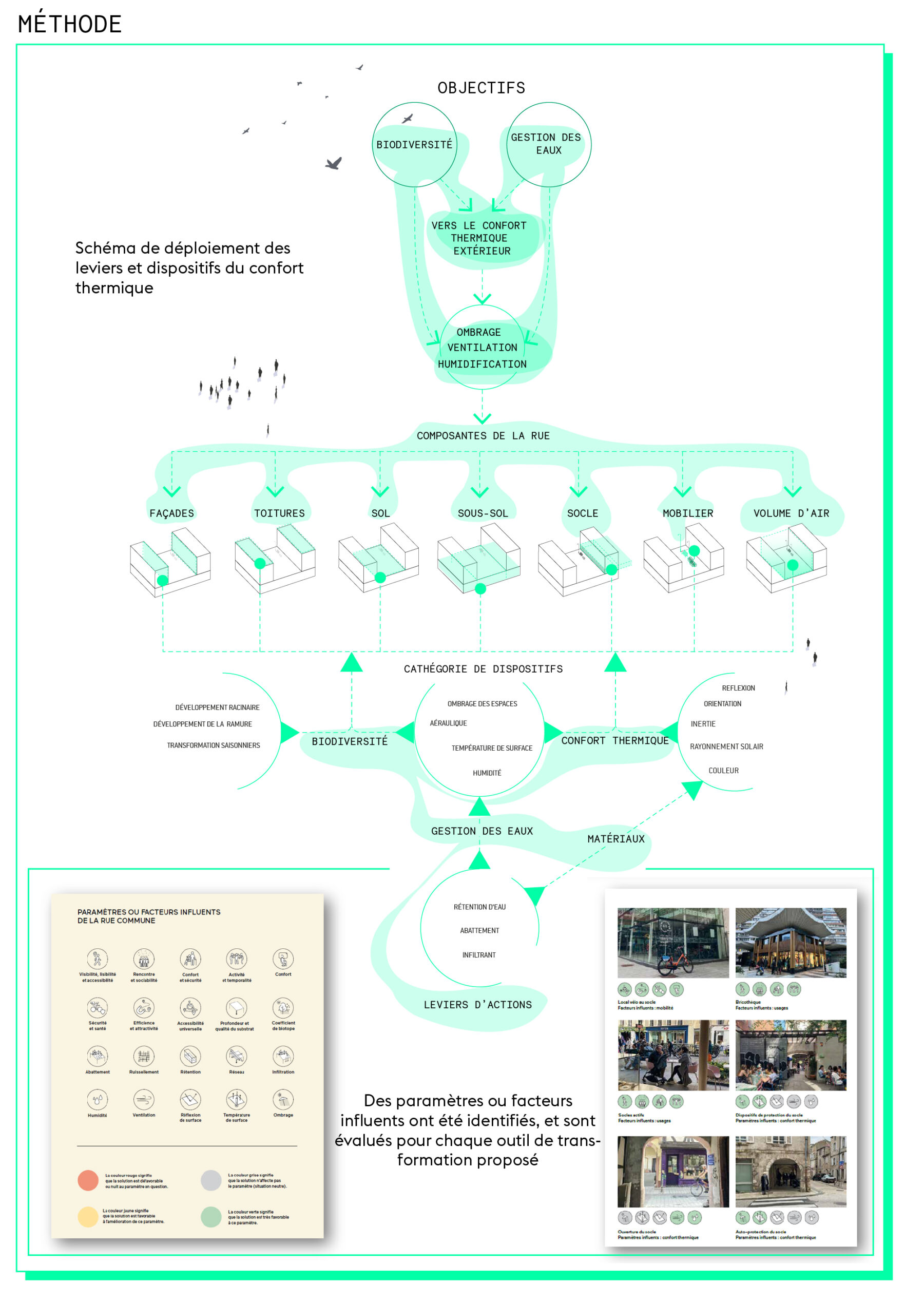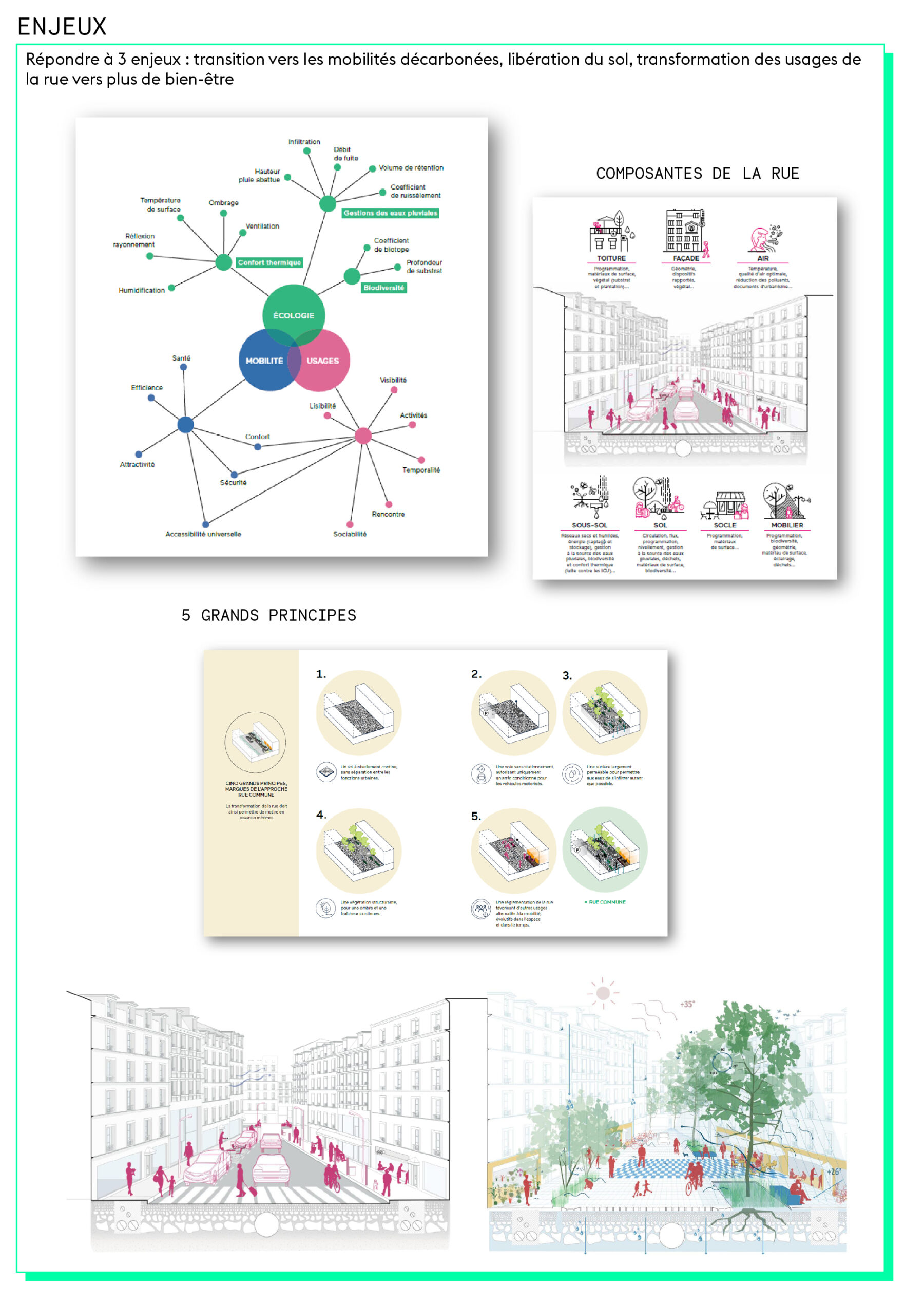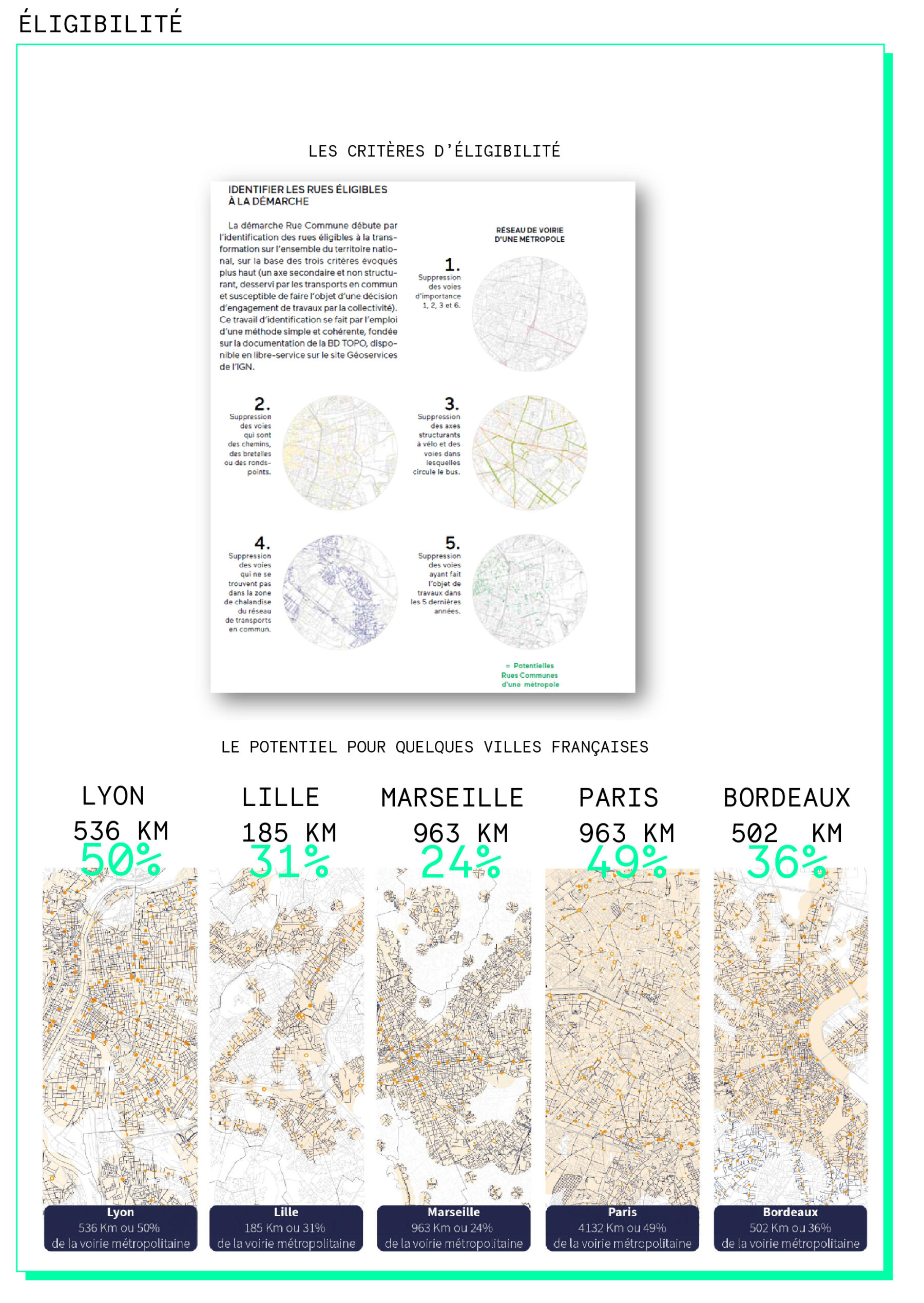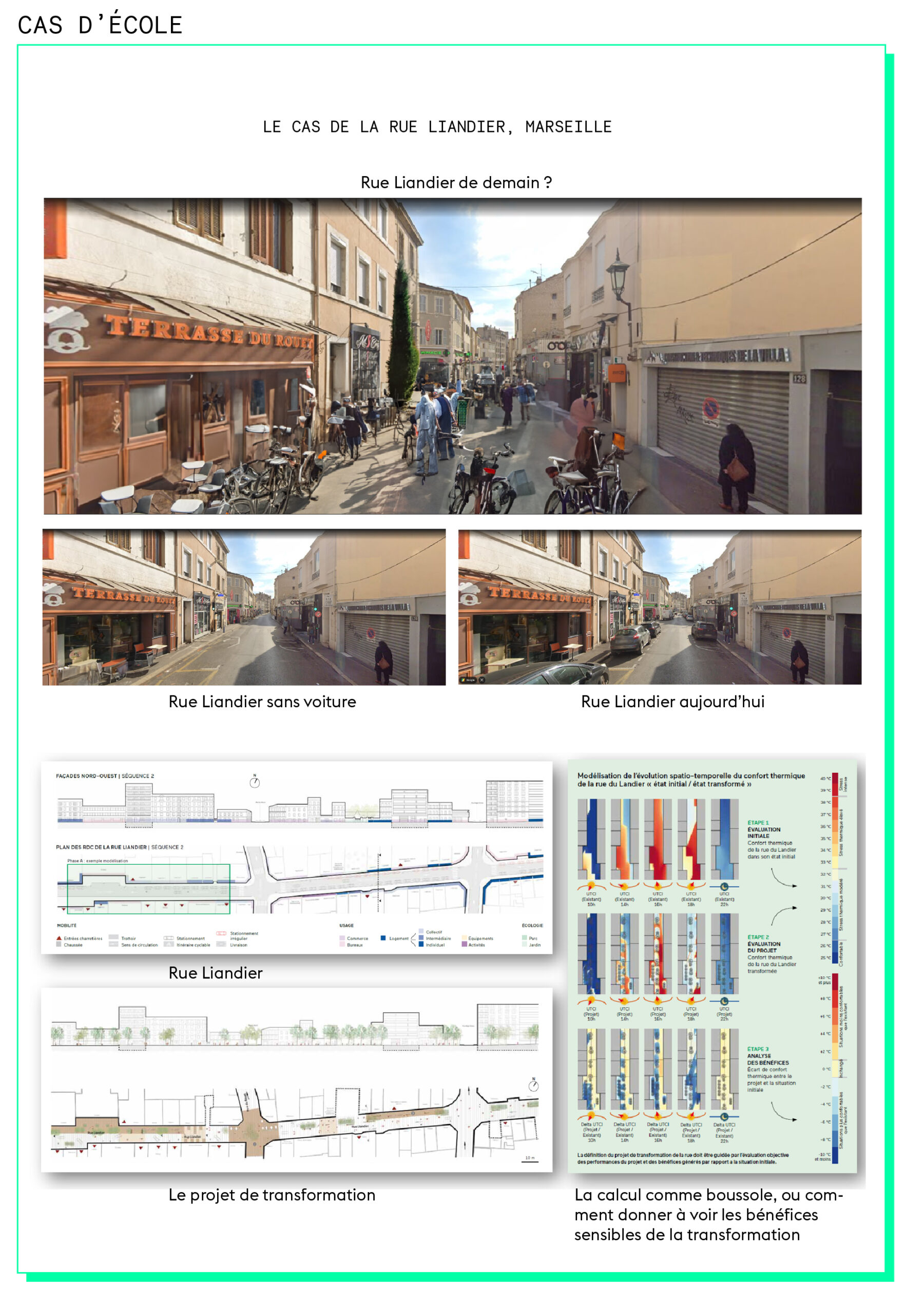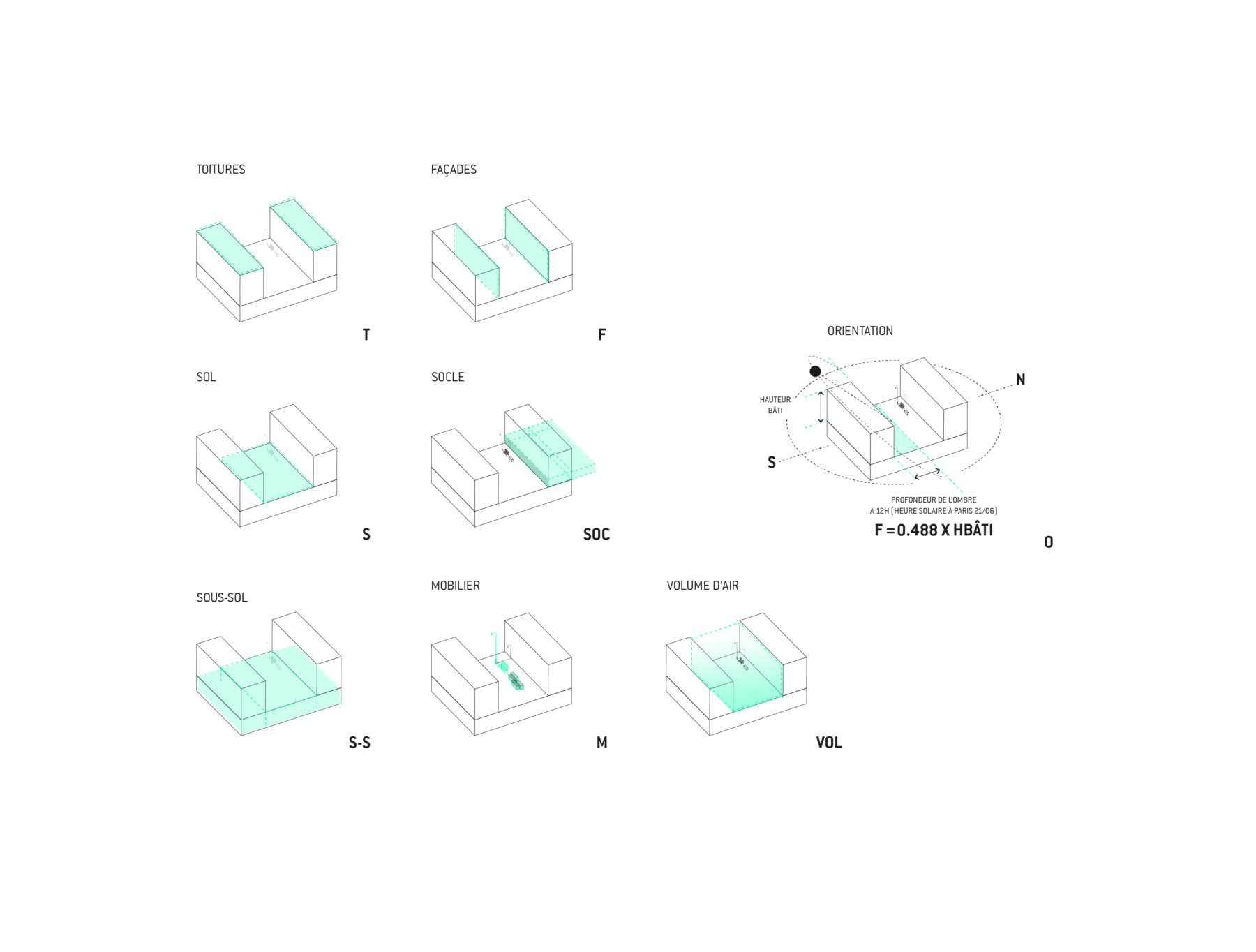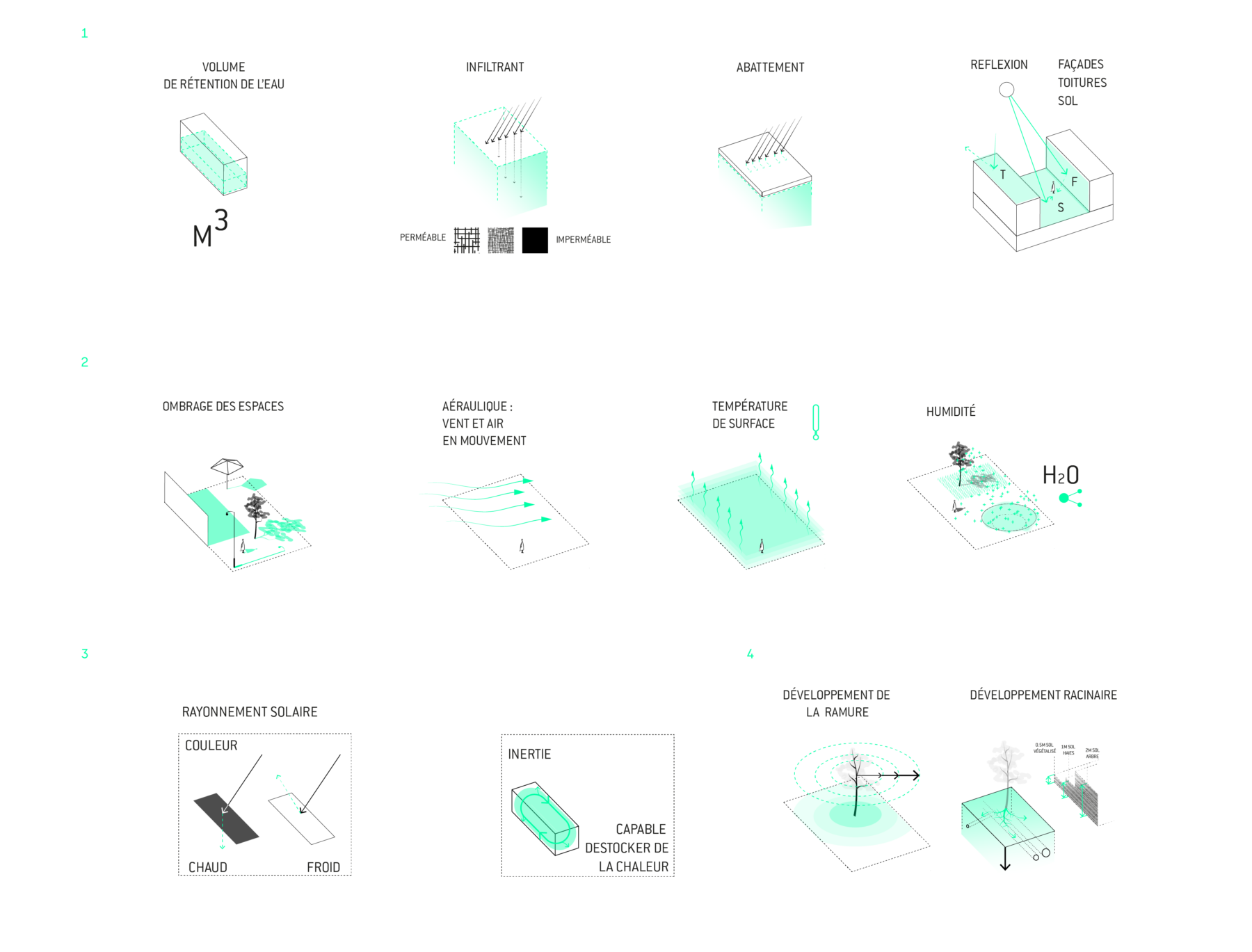La Rue Commune
Research
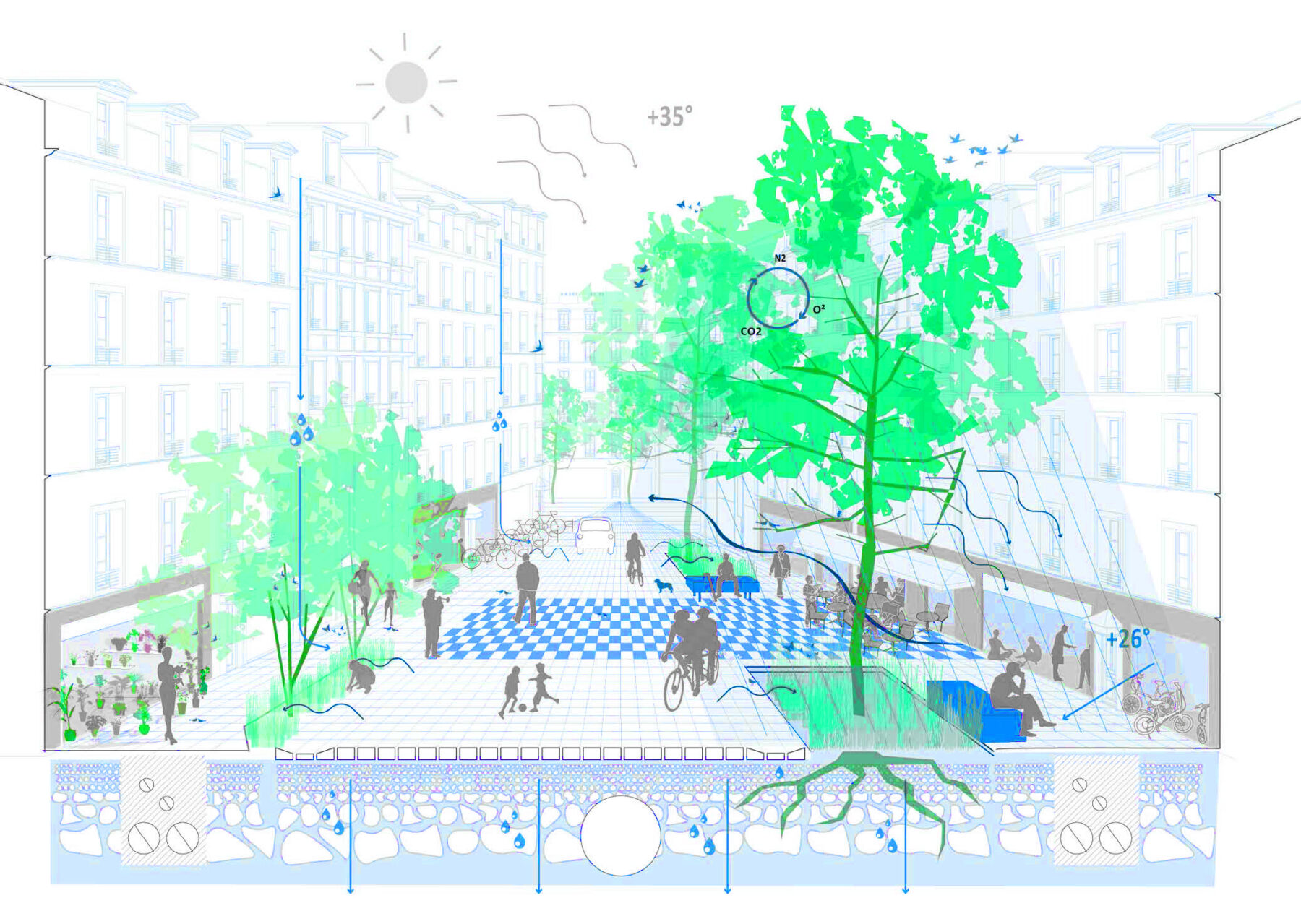
Change the ground to green the streets, transform buildings to cool down the city, change the rules to play football or marbles, sit on the sidewalk to have a drink on a makeshift terrace, or ride a bike with total peace of mind; drive change through users and merge public and private actions; in a nutshell, transform ordinary streets into peaceful, ecological, desirable shared streets to adapt the city to the challenges of the 21st century: this is the program developed in partnership with Leonard and Richez Associés.
With “the shared street” (La Rue Commune)—an unprecedented approach integrating climate, environmental, landscape, social, and economic approaches—the consortium plans to transform ordinary urban streets to create the model sustainable and desirable city of the 21st century.
The first stage of the program consisted in drawing up a contextual methodological guide, and included an initial sequence of diagnostics.
The second stage explored how to steer the design of a street transformation through performance-based assessments of the program based on the objectives identified. It recommends a catalog of systems structured around the seven components of the street: subsoil, ground, foundations, facades, roofs, street furniture, and air volume.
The third section of the guide presents case studies that illustrate how to apply the method to operational situations.
The shared street posits that we need to start with the street—the smallest common denominator of the urban fabric—to build the post-Covid, post-car, post-carbon city.
The Guide de la Rue Commune (Shared Street Guide) project is part of a “call for commons” on regional resilience, sponsored by the French Environment and Energy Management Agency (ADEME). Its aim is to provide local authorities with a methodological guide for diagnosis and implementation, in order to accelerate the adaptation of ordinary urban streets in response to the climate and social emergency. Atelier Franck Boutté helped build the conceptual foundations of the guide (the division of the street into several components) and addressed three environmental subjects: rainwater management, thermal comfort, and biodiversity.
The guide includes a diagnostic methodology which, for each of the three environmental themes, provides a “profile” of the street based on quantitative and qualitative indicators. An evaluation methodology is then used to assess the performance of the street’s transformation in terms of three criteria: rainwater management, thermal comfort, and biodiversity.
Call for Commons
ADEME
Team
Richez_Associés, Leonard, Atelier Franck Boutté
AFB Team
Julien Despax, Matteo Migliari, Loïc Chesne, and Alix Derouin
AFB alumni: Adrien Simon, Ismail SakoutSchedule
Since 2021
